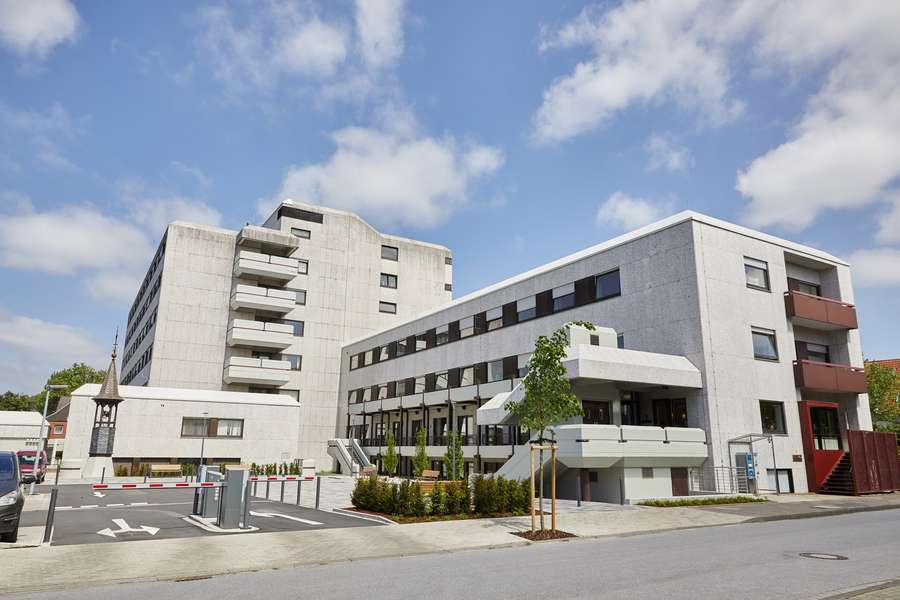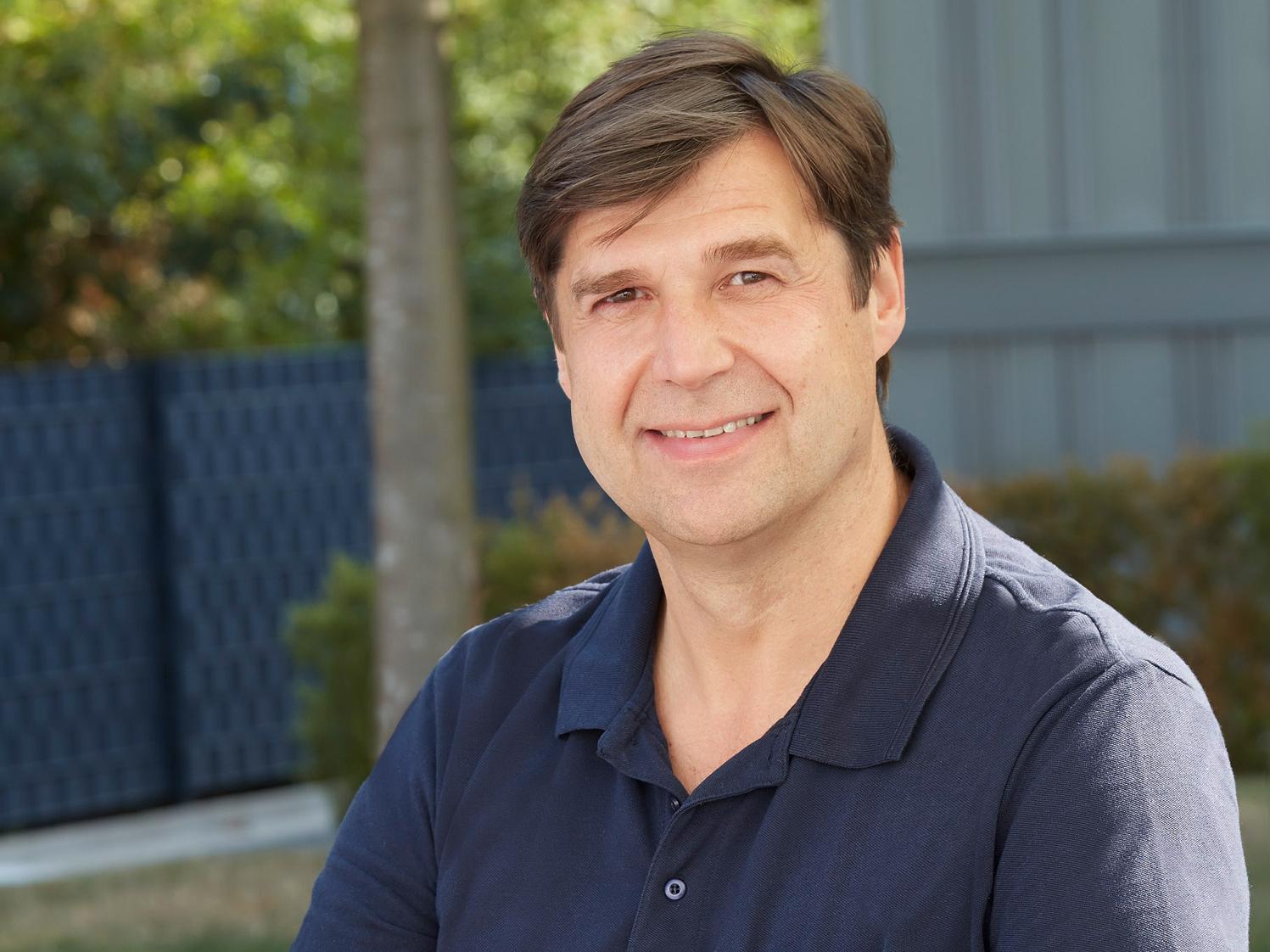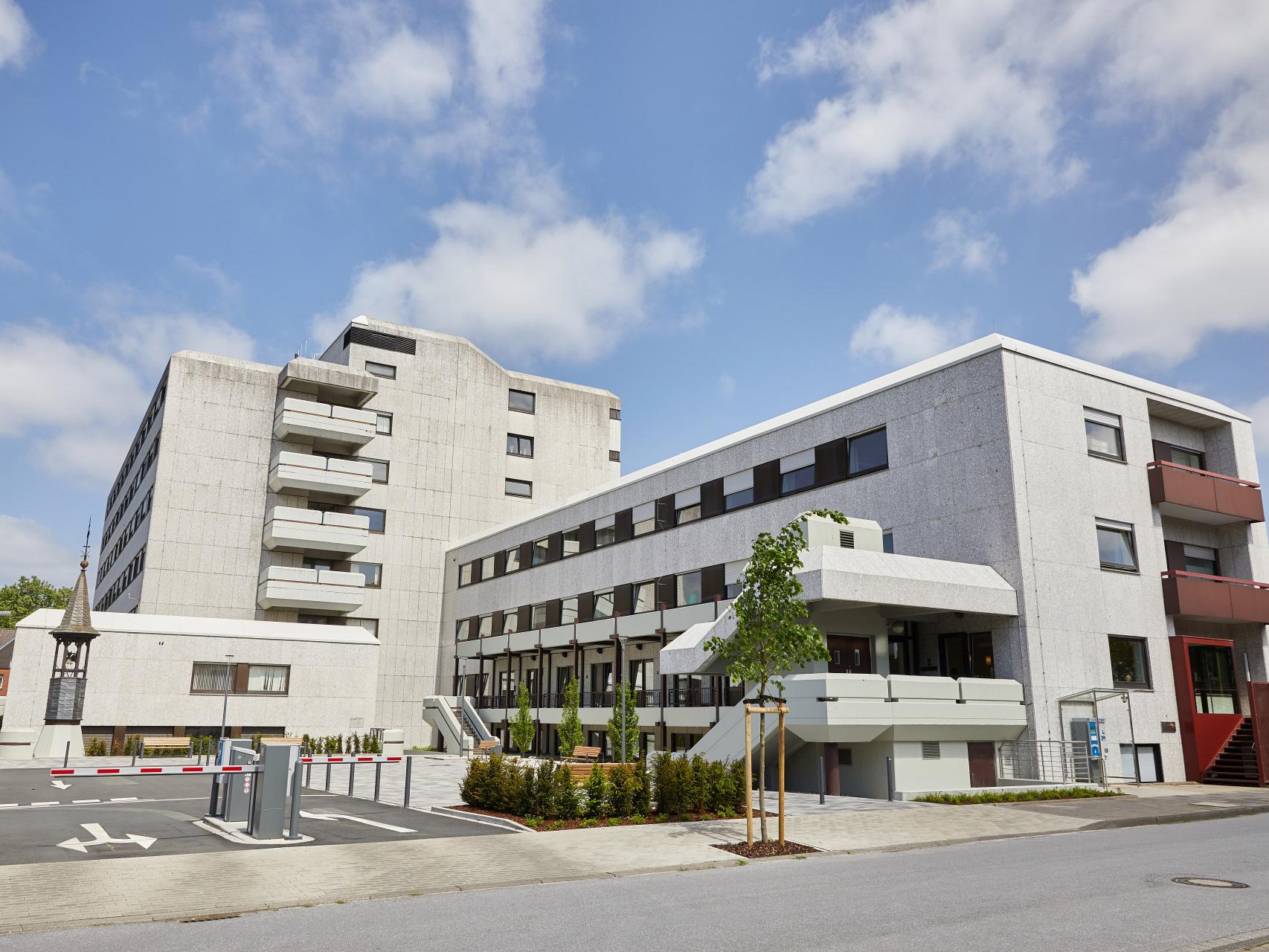
Daily commitment to quality and safety
Heinz Ostermann is maintaining the beds in the Marienhospital in Oelde
Heinz Ostermann knows Stiegelmeyer's beds better than almost anyone else. The longtime technician of the Marienhospital in Oelde, Germany, inspects and maintains beds from several generations, from the model Contura from 1978 to the brand-new Puro. What his work looks like and what he appreciates about the cooperation with Stiegelmeyer, he explains in an interview with the FORUM team.
Mr. Ostermann, please introduce yourself to our readers.
I am 52 years old and have been working for 25 years in the Marienhospital Oelde. I started as a painting and varnishing foreman. For 20 years I have been assigned to repair the beds in the hospital as a technician. 270 Stiegelmeyer beds are in use in our facility, 160 of them with electric drive.
How do you keep track of the maintenance of 270 beds?
I stick an inspection badge on the foot end. Each year, this badge has a new color, so you can see immediately, which beds’ turn it is again. Then one can say to the colleagues on the wards: "All beds with a brown badge must go through inspection." I examine all 270 beds within one year, thus one to two beds per day. We let Stiegelmeyer inspect and maintain the more elaborate electric Vitano beds. I also call Stiegelmeyer, if I need spare parts or have questions. Their service team is very reliable, you always get a reasonable answer and spare parts deliveries come very fast.
With which Stiegelmeyer models do you work?
Our oldest mechanical beds are Conturas, which are very old, but "indestructible". You have little work with it. For the premium wards we have 28 still modern Vitano beds. We also have 40 Vivendo beds, the intensive bed Sicuro plus, Seta beds and also the new Puro. When I went to training courses at Stiegelmeyer, I often saw new models and strongly advocated to get them for our facility. I remember well what a quantum leap the new Seta was back then.
How does a bed inspection work in your facility?
At the beginning is a visual inspection, then a mechanical or electrical test is performed. We check the safety sides and check if the required dimensions are complied with. For this we received a Plexiglas gauge from Stiegelmeyer, which works very well with this. The cleaning of the beds is not part of the inspection - it is done by an external partner in a separate room of the clinic as wipe disinfection.
What wishes do you have for the future beds from Stiegelmeyer?
The Puro comes very close to the idea an ideal bed. It is well-engineered for cleaning. The patients feel comfortable with the split safety sides. Many wish that only the head elements are raised. The integrated mobilisation support helps patients get up and is a relief to the nurses. Kinesthetics courses for the nursing staff for the correct handling of mechanical and electrical beds are regularly carried out here. The beds are easy to manoeuvre, while double-running castors are running slightly easier than simple castors.
In the future, how do you assess the importance of computer programs or tracking systems in the management of the bed stock?
I am very open and have already seen interesting things on training courses. The district governments also make higher demands, e.g. regarding the documentation of inspections. Stiegelmeyer supported us in the creation of a digital inspection protocol with interactive boxes.
Thank you for the interview!




